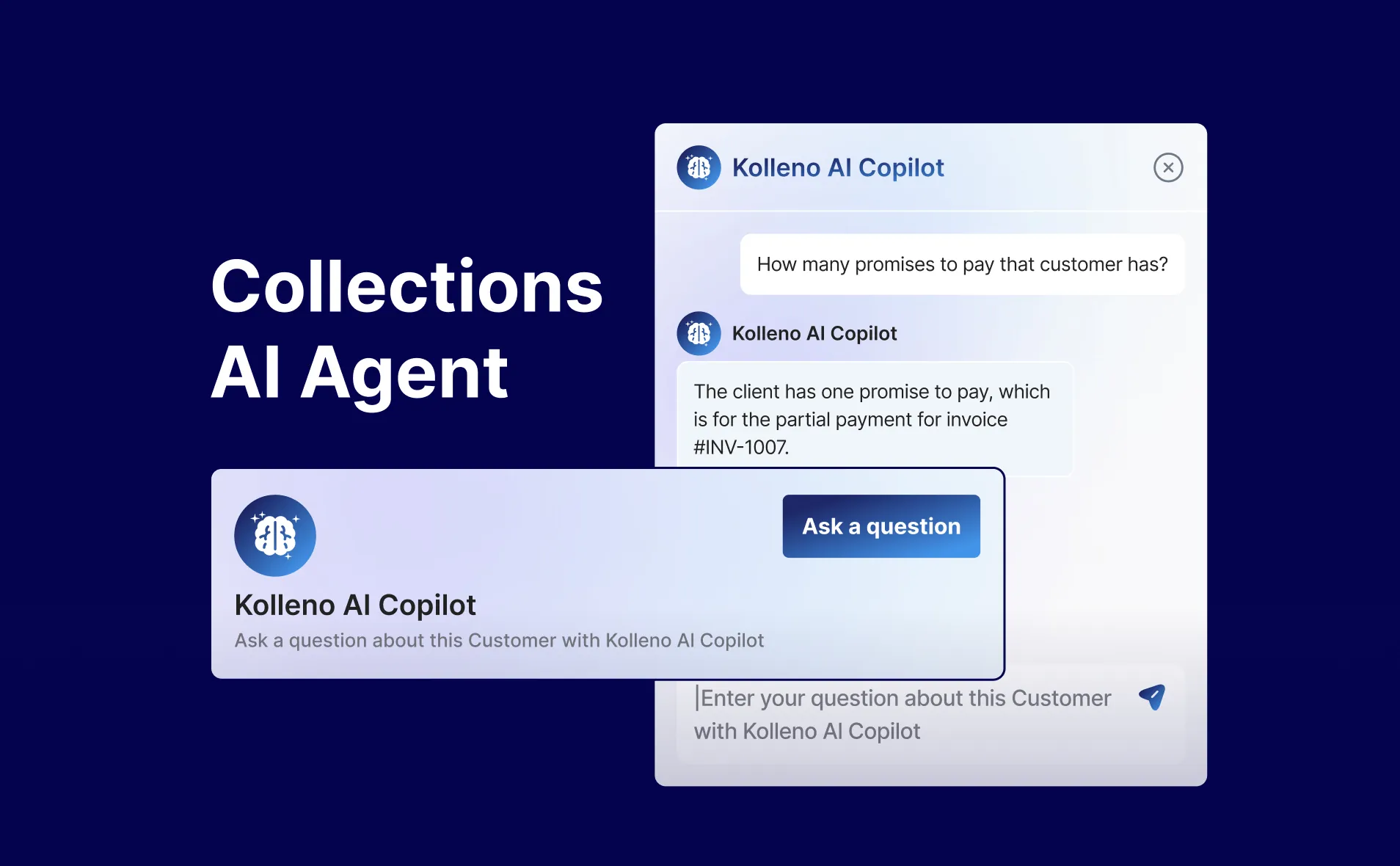Accounts receivable (AR) represents the outstanding invoices a company has or the money owed by clients for goods and services provided. Traditionally, managing AR has been a manual, labor-intensive process prone to errors and delays. However, with the advent of accounts receivable automation, businesses can streamline this process, reduce errors, and improve cash flow.
In this comprehensive article, we will explain what AR automation is, how it can enhance the efficiency of your AR management, and explore future trends in the field.
In This Article
- Understanding Accounts Receivable Automation
- Benefits of Accounts Receivable Automation
- Key Features of Accounts Receivable Automation Software
- Typical Challenges in AR Automation
- Future Trends in Accounts Receivable Automation
Understanding Accounts Receivable Automation
Accounts receivable automation involves using technology to handle the tasks associated with managing a company’s receivables. This includes invoice generation, sending reminders, tracking payments, and reconciling accounts. Automation software leverages machine learning and artificial intelligence (AI) to optimize and expedite these processes, freeing up valuable time and resources for businesses.
Benefits of Accounts Receivable Automation
Increased Efficiency and Productivity:
- Automation reduces the need for manual data entry and repetitive tasks, allowing employees to focus on more strategic activities.
- It accelerates the invoicing process, ensuring that invoices are sent out promptly, which can help improve the cash conversion cycle.
Improved Accuracy and Reduced Errors:
- Manual processes are prone to human error, which can lead to incorrect invoices, missed payments, and ultimately, strained customer relationships.
- Automation ensures data consistency and accuracy, reducing the risk of errors and discrepancies.
Enhanced Cash Flow Management:
- Timely and accurate invoicing leads to faster payments, which improves a company’s cash flow.
- Automation tools can provide insights and analytics, helping businesses forecast cash flow and plan accordingly.
Better Customer Relationships:
- Automated reminders and notifications ensure that customers are informed about their dues without delay.
- Providing accurate and timely invoices enhances trust and reliability, leading to better customer relationships.
Cost Savings:
- By reducing the need for manual labor, businesses can save on operational costs.
- Fewer errors also mean less money spent on correcting mistakes or handling disputes.
Key Features of Accounts Receivable Automation Software
Collection Workflows
Accounts receivable automation software includes several essential features, with automated collection workflows being one of the most impactful. These workflows streamline the process of managing and collecting outstanding invoices by automating tasks and activities. The software sends reminder emails and notifications based on predefined schedules and templates, ensuring customers are regularly reminded of their balances, reducing late payments, and improving cash flow. It supports multiple communication channels, such as email, SMS, and automated voice calls, enhancing customer reach and fostering timely payments.
Additionally, automated collection workflows prioritize accounts based on risk levels and outstanding amounts. The software analyzes payment histories and categorizes accounts, ensuring high-risk accounts receive more frequent follow-ups, thus improving collections efficiency. Integration with ERP and CRM systems keeps customer data up-to-date and consistent across the organization, facilitating seamless data sharing. By leveraging these workflows, businesses reduce manual effort, minimize errors, and improve cash flow management. This leads to a more efficient and effective accounts receivable process, contributing to better financial health and stability for the organization.
Payment Tracking
Payment tracking is a crucial feature of accounts receivable automation software, designed to offer real-time visibility into the status of invoices. The software continuously monitors payment statuses, providing immediate insights into which invoices have been paid and which are still outstanding. This real-time monitoring helps businesses stay on top of their receivables, ensuring that they can quickly address any issues or delays in payments. By having up-to-date information on payment statuses, companies can make more informed decisions and improve their overall cash flow management.
Automated Reconciliation
Reconciliation is another vital feature of accounts receivable automation software, aimed at reducing the manual effort involved in matching payments with invoices. The software automatically reconciles payments with the corresponding invoices, ensuring accuracy and consistency. This automation significantly reduces the time and effort required for manual reconciliation, allowing finance teams to focus on more strategic tasks. By streamlining the reconciliation process, businesses can minimize errors, reduce discrepancies, and maintain accurate financial records, ultimately leading to a more efficient and effective accounts receivable process.
Automated Reminders and Notifications
Automated reminders and notifications are also integral to accounts receivable automation. The software sends automated reminders to customers for upcoming or overdue payments, with the ability to customize notification schedules and messages to cater to different customer segments. This feature helps maintain timely payments and improves overall cash flow.
Reporting and Analytics
Reporting and analytics capabilities are another key aspect of accounts receivable automation software. The software generates detailed reports on receivables, payment trends, and customer behavior. These analytics tools help businesses identify patterns, forecast cash flow, and make informed decisions, contributing to better financial management and strategic planning.
Integration with Other Systems
Lastly, integration with other systems is a significant feature of accounts receivable automation software. It seamlessly integrates with ERP, CRM, and accounting systems, ensuring data consistency and streamlined workflows across the organization. Additionally, API support allows for custom integrations with other business applications, providing flexibility and enhancing the overall functionality of the automation solution.
Typical Challenges in AR Automation
Resistance to Change
One of the primary challenges in implementing accounts receivable automation is resistance to change. Employees may be hesitant to adopt new technology due to fear of the unknown or disruption to their established routines. To address this, it is essential to communicate the benefits of automation clearly and provide comprehensive training and support. Ensuring that employees understand how the new system will improve their workflows and reduce manual effort can help ease the transition and foster acceptance.
Data Quality Issues
Inaccurate or incomplete data can significantly hinder the effectiveness of automation. Before implementing a new system, it is crucial to conduct thorough data cleansing and validation to ensure accuracy and consistency. Migrating clean, well-organized data to the new system is vital for its success. This step helps prevent errors and discrepancies that could arise from poor data quality, ensuring that the automation processes run smoothly and effectively.
Integration Difficulties
Integrating automation software with existing systems such as ERP, CRM, and accounting platforms can be complex and time-consuming. Choosing software with robust integration capabilities is critical, as it ensures seamless data sharing and workflow consistency across the organization. Seeking assistance from experts or consultants can also facilitate a smoother integration process, helping to overcome technical challenges and ensuring that the new system works harmoniously with existing infrastructure.
Cost Concerns
The initial investment in automation software can be significant, leading to concerns about costs. However, it is important to consider the long-term benefits, such as increased efficiency, reduced errors, and operational cost savings. Evaluating the return on investment (ROI) from improved cash flow management and reduced manual labor can help justify the upfront costs. Highlighting these potential savings can alleviate concerns and support the decision to implement automation.
By addressing these challenges strategically, businesses can successfully implement accounts receivable automation and reap the benefits of increased efficiency, accuracy, and improved cash flow management.
Future Trends in Accounts Receivable Automation
It is clear that AI and machine learning technologies are here to stay, becoming increasingly integrated into every aspect of our lives. While, Kolleno is already leveraging AI to help finance teams automate the accounts receivable process, looking ahead, the future of AR management will be closely tied to the advancement of AI capabilities. These technologies will progressively automate a broader range of tasks, allowing businesses to focus only on strategic activities and let AI manage all routine administrative work without the need to supervise it.
Advanced Data Analysis and Predictive Insights
AI and machine learning bring advanced data analysis and predictive insights to accounts receivable automation. These technologies can analyze vast datasets to identify payment patterns and trends that might go unnoticed by human analysts. By predicting customer payment behaviors and identifying high-risk accounts, AI enables businesses to implement proactive strategies for collections. This predictive capability ensures that finance teams can address potential issues before they escalate, enhancing overall cash flow management.
Enhanced Customer Communication
AI-driven automation also improves customer communication. Machine learning algorithms can determine the most effective times to contact customers and the best communication channels to use. Personalized messages tailored to individual customer behaviors and preferences result in higher engagement and prompt payments. This level of customization not only increases efficiency but also fosters better customer relationships, as clients feel understood and valued.
Continuous Improvement and Learning
A significant advantage of AI in AR automation is its ability to learn and improve continuously. Systems like Kolleno’s AI Copilot evolve with each interaction, refining their processes and strategies over time. This ongoing improvement ensures that the automation software becomes more effective and efficient, adapting to changing business needs and customer behaviors. As a result, companies benefit from a dynamic system that consistently enhances their AR management processes.
Reduction of Manual Errors
AI and machine learning significantly reduce the likelihood of manual errors in the accounts receivable process. By automating repetitive and time-consuming tasks, these technologies minimize the risk of mistakes that can lead to discrepancies and financial losses. Automated systems ensure data accuracy and consistency, providing reliable financial information that businesses can depend on for decision-making.
Strategic Focus for Finance Teams
With AI and machine learning handling routine tasks, finance teams can redirect their focus to more strategic activities. Instead of spending time on manual data entry and follow-ups, teams can concentrate on analyzing financial performance, developing growth strategies, and optimizing cash flow. This shift towards strategic work enhances the overall value that finance teams bring to their organizations.
Conclusion
Accounts receivable automation is a powerful tool that can transform how businesses manage their receivables. By leveraging technology, companies can improve efficiency, accuracy, and cash flow while enhancing customer relationships and reducing costs. Automation reduces the need for manual data entry, minimizes errors, and ensures timely invoicing and payment tracking, leading to faster and more reliable cash flow.
As AR automation continues to evolve, incorporating advanced technologies like AI and machine learning, businesses that embrace these advancements will be better positioned to thrive in an increasingly competitive market. AI can provide predictive insights, enabling proactive management of receivables, and personalized communication strategies that enhance customer relationships. Machine learning algorithms continuously refine processes, ensuring ongoing improvement and adaptation to changing business needs.
Whether you are a small business or a large enterprise, the benefits of accounts receivable software make it a worthwhile investment for the future. Small businesses can achieve significant time savings and cost reductions, allowing them to focus on growth and strategic initiatives. Larger enterprises can handle complex receivables more efficiently, ensuring data consistency across various systems and departments. Ultimately, accounts receivable automation provides a scalable solution that grows with your business, driving improved financial performance and stability. By investing in AR automation, companies can secure a competitive edge, ensuring long-term success and sustainability in a dynamic business environment.
- In This Article
- Understanding Accounts Receivable Automation
- Benefits of Accounts Receivable Automation
- Key Features of Accounts Receivable Automation Software
- Collection Workflows
- Payment Tracking
- Automated Reconciliation
- Automated Reminders and Notifications
- Reporting and Analytics
- Integration with Other Systems
- Typical Challenges in AR Automation
- Future Trends in Accounts Receivable Automation
- Conclusion




